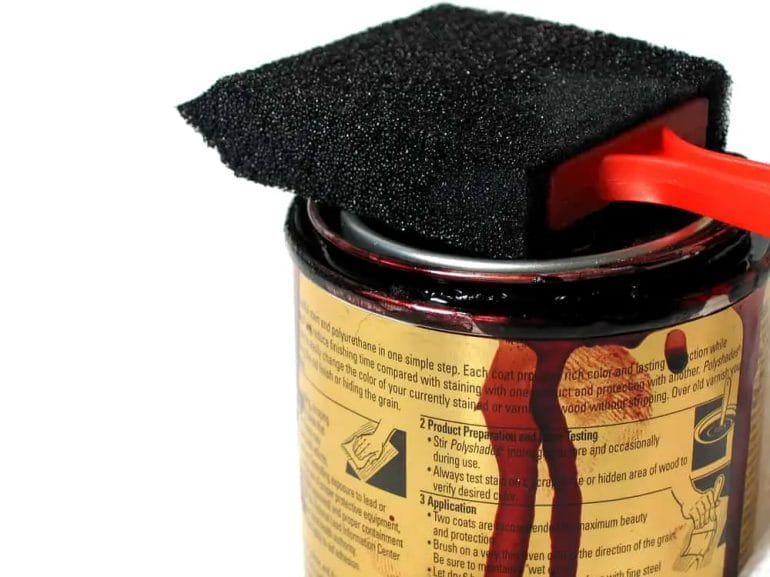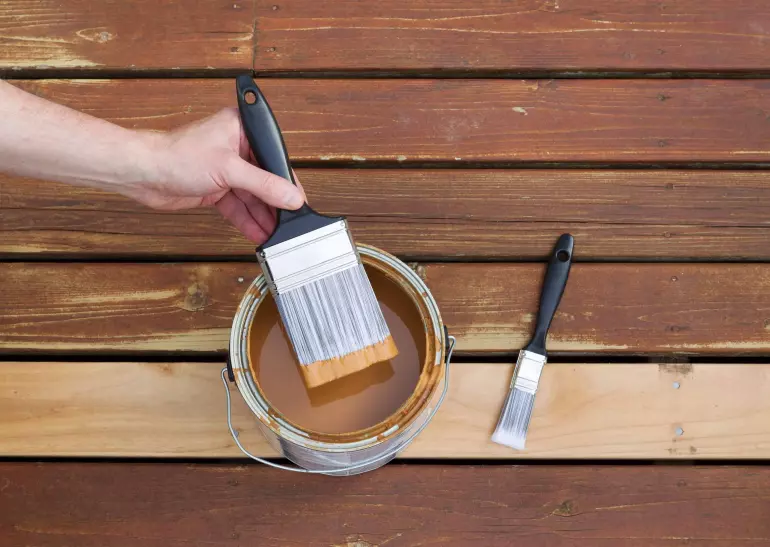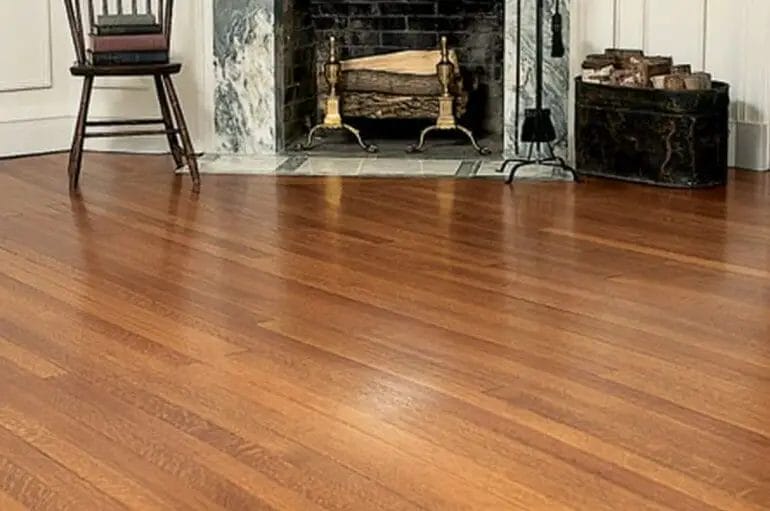Wood stain is a popular choice for enhancing the natural beauty of wood surfaces. However, like many other products, wood stain can deteriorate over time. When stored improperly, wood stain can go bad and become unusable. Exposure to extreme temperatures, moisture, and air can cause the stain to thicken, separate, or develop a foul odor. It is important to check the expiration date and properly store the stain to ensure its longevity. Regularly inspecting and replacing old or expired wood stain will help you achieve the best results for your woodworking projects.

How long does wood stain last?
Wood stain is a popular and effective way to enhance the appearance of wood surfaces, such as decks, furniture, and flooring. It not only adds color but also protects the wood from the elements. However, like any other finish, the longevity of wood stain depends on various factors.

Type of Wood Stain: Different types of wood stains have different durability. Oil-based stains generally last longer than water-based stains. Oil-based stains penetrate deeper into the wood and provide better protection against weathering and wear. Water-based stains, on the other hand, may fade or wear out more quickly.
Quality of Stain: The quality of the stain plays a significant role in its longevity. Higher-quality stains tend to last longer and maintain their color and performance over time. It is recommended to choose a reputable brand and opt for stains specifically formulated for outdoor use if applied to exteriors.
Exposure to Sunlight: Sunlight is one of the main factors that can affect the lifespan of wood stain. Ultraviolet (UV) rays can cause the stain to fade, especially when the wood is exposed to direct sunlight for prolonged periods. Stains with added UV protection can help prolong the color and integrity of the stain.
Climate and Weather Conditions: The climate in which the wood is located also plays a role in the longevity of the stain. Extreme temperature changes, humidity, rain, and snow can all impact the lifespan of the stain. In regions with harsh weather conditions, it may be necessary to reapply the stain more frequently.
Maintenance and Care: Proper maintenance and regular care can significantly extend the lifespan of wood stain. This includes routine cleaning, avoiding abrasive cleaners or tools that can damage the stain, and periodic reapplication of a protective sealant or topcoat. It is recommended to follow the manufacturer’s instructions for maintenance and reapplication.
Usage and Traffic: The level of usage and foot traffic on the stained wood surface can also impact its longevity. Areas with heavy use, such as decks or high-traffic floors, may require more frequent touch-ups or reapplication of the stain to maintain its appearance and protection.
In summary, the lifespan of wood stain can vary depending on factors such as the type and quality of stain, exposure to sunlight, climate conditions, maintenance, and usage. While some stains may last several years before requiring reapplication, others may require more frequent touch-ups. Regular upkeep and proper care can help prolong the life of the stain and keep your wood surfaces looking beautiful.

Signs of Expired Wood Stain
If you have ever worked with wood stain before, you may be aware that it has a shelf life. Over time, wood stain can expire and lose its effectiveness. This can be a problem if you are planning to use wood stain on your next woodworking project. So, how can you tell if your wood stain has expired? In this section, we will discuss the signs of expired wood stain.
1. Change in Color
One of the first signs that your wood stain may have expired is a change in color. Wood stain typically has a rich and vibrant color when it is fresh. However, over time, the color may start to fade or become dull. If you notice that the color of your wood stain has significantly changed, it may be an indication that it has expired.
2. Separation
Another sign that your wood stain may have expired is the separation of its components. Wood stains are composed of pigments and binders that work together to create a smooth and even finish. When a wood stain expires, these components can separate, causing a thick sludge to form at the bottom of the container. If you see a layer of sludge or notice that the stain is not mixing well, it is likely past its expiration date.
3. Foul Odor
Expired wood stain can also emit a foul odor. Fresh wood stain usually has a mild, earthy smell. However, when it goes bad, the stain can develop a pungent and unpleasant odor. If you open your wood stain container and are greeted with a strong and unpleasant smell, it is a clear indication that the product has expired.
4. Inconsistent Application
When wood stain expires, it can lose its ability to apply evenly. You may notice that the stain becomes clumpy or that it does not spread smoothly on the surface of the wood. This can result in an uneven and patchy finish. If you are experiencing difficulties in applying the stain smoothly, it may be a sign that it has expired.
5. Poor Performance
Lastly, an expired wood stain may simply not perform as expected. It may fail to penetrate the wood properly or provide the desired level of protection. The finish may appear blotchy or fade quickly. If you find that your wood stain is not delivering the results you anticipated, it is worth considering that it may be past its prime.
In summary, there are several signs that can indicate the expiration of wood stain. These include a change in color, separation of components, foul odor, inconsistent application, and poor performance. If you notice any of these signs, it is best to replace your expired wood stain with a fresh and effective product to ensure the best results on your woodworking projects.

Proper Storage of Wood Stain
Wood stain is a popular choice for enhancing the natural beauty of wood surfaces. Whether you are a professional woodworker or a DIY enthusiast, proper storage of wood stain is essential to ensure its longevity and effectiveness. In this section, we will discuss some important tips on how to store wood stain properly.1. Seal the Container Properly
When storing wood stain, it is crucial to seal the container tightly. This will help prevent air from entering and causing the stain to dry out or thicken. Make sure the lid is securely closed and check for any leaks. If the original container is not adequate, consider transferring the stain to an airtight container that is specifically designed for storing paint or stain.2. Store in a Cool and Dry Place
Wood stain should be stored in a cool and dry place to maintain its quality. Exposure to extreme temperatures, such as freezing or excessive heat, can affect the consistency and performance of the stain. Avoid storing the stain in areas that are subject to direct sunlight or fluctuations in temperature, such as attics or garages.3. Keep Away from Flammable Materials
Wood stain typically contains solvents that are flammable. It is important to store the stain away from any flammable materials, such as gasoline, paint thinner, or other chemicals. Keeping the stain in a separate storage area will help reduce the risk of fire hazards.4. Store Away from Children and Pets
Wood stain should be stored out of reach of children and pets. The chemicals in the stain can be harmful if ingested or inhaled. Store the stain in a high cabinet or on a shelf that is not easily accessible to prevent accidental exposure.5. Label and Date the Containers
To ensure that you can easily identify the type and date of the wood stain, it is recommended to label each container. Use a permanent marker to write down the brand, color, and date of purchase on the container. This will help you keep track of the age of the stain and determine if it is still usable.6. Shake or Stir Before Use
Before using the stored wood stain, it is important to shake or stir the container thoroughly. This will help mix any settled pigments or particles and ensure a consistent color and texture. Follow the manufacturer’s instructions for proper mixing techniques. In summary, proper storage of wood stain is crucial to maintain its quality and effectiveness. Seal the container tightly, store it in a cool and dry place, away from flammable materials, and out of reach of children and pets. Label and date the containers for easy identification, and always shake or stir the stain before use. By following these tips, you can ensure that your wood stain remains in optimal condition for future projects.Tips for Extending the Shelf Life of Wood Stain
Wood stain is a popular choice for enhancing the beauty and longevity of wooden surfaces. However, if not properly stored and maintained, wood stain can deteriorate over time, leading to wasted resources and disappointing results. To ensure that your wood stain remains in optimal condition for as long as possible, consider the following tips:
1. Store in a Cool, Dry Place
Wood stain is sensitive to heat and humidity, which can accelerate its degradation. To extend its shelf life, store it in a cool and dry place, away from direct sunlight and moisture. A temperature-controlled environment such as a basement or garage can be ideal for preserving the quality of your wood stain.
2. Seal the Container Tightly
Air exposure can cause wood stain to thicken and dry out. To prevent this, make sure to seal the container tightly after each use. This will minimize the contact of the stain with oxygen, preserving its consistency and preventing premature deterioration.
3. Avoid Contamination
To maintain the quality of your wood stain, avoid cross-contamination with other substances. Use clean brushes, rollers, or applicators specifically designated for wood staining. Any debris or foreign particles in your stain can compromise its effectiveness and lead to uneven or unsatisfactory results.
4. Stir Before Use
Over time, the components of wood stain can settle at the bottom of the container. Before applying the stain, thoroughly stir it to ensure an even distribution of its pigments and additives. This will not only provide consistent color but also help to activate any settling ingredients that may have separated.
5. Test Before Application
Before applying the wood stain to a large area, it is advisable to conduct a test on a small, inconspicuous spot. This will allow you to assess the stain’s color, consistency, and compatibility with the wood surface. Additionally, it provides an opportunity to make any necessary adjustments or modifications before committing to the entire project.
6. Use within Recommended Timeframe
Wood stain typically comes with a recommended usage timeframe indicated by the manufacturer. It is important to follow these guidelines and use the stain within the specified period. Using outdated or expired wood stain may result in poor adhesion, inconsistent color, or even damage to the wood surface.
7. Consider Proper Disposal
If you find yourself with leftover or expired wood stain, it is essential to dispose of it properly. Check your local regulations for guidance on how to safely and responsibly dispose of unused or unwanted stain products. This will help protect the environment and prevent any potential hazards.
By following these tips, you can significantly prolong the shelf life of your wood stain, saving you time, money, and frustration. Remember to store it in a cool and dry place, seal the container tightly, avoid contamination, stir before use, test before application, use within the recommended timeframe, and consider proper disposal. With proper care and maintenance, your wood stain will remain in excellent condition, allowing you to achieve beautiful and long-lasting results on your wooden projects.
FAQs
Does wood stain go bad?
Yes, wood stain can go bad over time. The shelf life of wood stain can vary depending on factors such as the type of stain and how it has been stored. Generally, an unopened can of wood stain can last for several years, while an opened can may start to degrade after 1-2 years. It’s best to check for any changes in odor or consistency before using an old can of wood stain.
Conclusion
In conclusion, wood stain can go bad over time due to various factors such as exposure to air, temperature fluctuations, and moisture. Over long periods, the consistency, color, and effectiveness of wood stain may change, resulting in poor results when applied to wood surfaces. It is recommended to check the expiration date and storage instructions on the stain container to ensure its optimum shelf life. Additionally, keeping stain containers tightly sealed and stored in a cool, dry place can help extend their lifespan. Regularly inspecting and testing the stain before application is essential to achieve desired and long-lasting results.